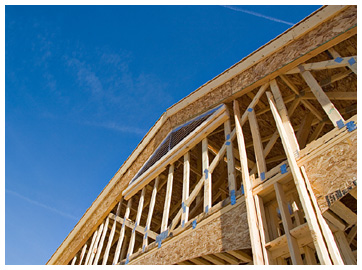Construction employment, spending hit highest levels since 2009; Beige Book is upbeat Editor’s note: Construction Citizen is proud to partner with AGC America to bring you AGC Chief Economist Ken Simonson's Data DIGest. Check back each week to get Ken's expert analysis of what's happening in our industry.
Editor’s note: Construction Citizen is proud to partner with AGC America to bring you AGC Chief Economist Ken Simonson's Data DIGest. Check back each week to get Ken's expert analysis of what's happening in our industry.
Nonfarm payroll employment increased by 175,000, seasonally adjusted, in February and 2,158,000 (1.6%) over 12 months, the Bureau of Labor Statistics (BLS) reported on Friday. Construction employment rose by 15,000 for the month and 152,000 (2.6%) over the year to 5,941,000, the highest total since June 2009. Despite the gain in jobs, aggregate weekly hours fell year-over-year for the first time since April 2011 (-0.5%), indicating severe weather idled many workers. Residential construction employment (residential building and specialty trade contractors) climbed by 1,700 for the month and 101,200 (4.8%) for the year. Nonresidential employment (building, specialty trades, and heavy and civil engineering construction) rose by 12,700 from January and 50,600 (1.4%) year-over-year. All five residential and nonresidential segments added workers for the year. The unemployment rate for jobseekers who last worked in construction fell to the lowest February level in six years: 12.8%, down from 15.7% in February 2013 and 27.1% in February 2010, the peak for construction unemployment. (Industry unemployment data are not seasonally adjusted and should only be compared year-over-year, not across months.) Since February 2010 the number of unemployed construction workers has dropped by 1,342,000, not seasonally adjusted. But construction employment rose by only 438,000, implying that many experienced workers left the industry for employment elsewhere, further training or schooling, retirement, or left the workforce. These departures may make it hard for contractors to find skilled workers if demand rises further, even though the unemployment rate remains higher than the overall nonfarm rate (7.0%, not seasonally adjusted; 6.7%, seasonally adjusted).
Construction spending in January totaled $943 billion at a seasonally adjusted annual rate, up 0.1% from December (which was revised up by $12 billion) and up 9.3% from January 2013, the Census Bureau reported last Monday. The total was the highest since March 2009, and year-over-year growth was the fastest since May 2006. The data may not accurately reflect slowdowns caused by severe winter weather, as Census relies in part on models that project spending for work started in earlier months, in addition to progress reports from a sample of contractors. (Census will describe its construction spending estimation process in a webinar on March 12.) Private residential spending rose 1.1% for the month and 15% over 12 months. Private nonresidential spending dipped 0.2% for the month but climbed 9.7% from January 2013. Public construction spending slid 0.8% for the month but gained 2.5% over the year. Of the three residential components, new single-family construction increased 2.3% for the month and 21% year-over-year; new multifamily, 1.0% and 2.8%, respectively; and improvements to existing residential structures, -0.4% and 4.3%. The largest private nonresidential segment—power (including conventional and renewable power plus oil and gas fields and pipelines)—plunged 5.0% for the month but rose 0.9% from a year earlier. (Expiration of the wind production tax credit at the end of 2913 may have depressed power construction in January.) The next three private segments (in descending order of 2013 size) were mixed: manufacturing construction, 3.8% and 7.9%; commercial (new and renovated retail, warehouse and farm), -2.2% and 15%; and office, 0% and 17%. Of the top two public categories, highway and street construction rose 3.7% and 15%, while public educational spending fell 1.8% and 3.0%.
Informal soundings of businesses in the 12 Federal Reserve districts “indicated that economic conditions continued to expand from January to early February,” the Fed reported on Wednesday in the latest "Beige Book." The districts are referenced by the name of their headquarters cities. Reports on “construction activity were mixed.…Price pressures remained subdued, with the exception of upward cost pressures for some [construction products]. New home construction increased in Richmond, Atlanta, Chicago, St. Louis and Minneapolis, and remained flat in Kansas City, and was down slightly from the previous period in Philadelphia. [The outlook for] residential construction was positive in Boston, Philadelphia, Cleveland, Atlanta and San Francisco. Strong multifamily construction was cited in New York, Cleveland, Richmond, Atlanta and Dallas, while Boston indicated that its pipeline of multifamily construction was declining….Philadelphia noted that there was very little activity to report in construction…due to severe winter weather. The outlook for nonresidential construction was fairly optimistic in Boston, Philadelphia, Cleveland, Atlanta, Minneapolis, Kansas City, Dallas and San Francisco…. Construction materials prices remained a source of upward cost pressure, according to contacts in Atlanta and Kansas City….a few districts cited upward wage pressures in some highly skilled jobs in industries such as…construction.”
Demand for retail space continues to implode. Staples LLC announced that it would close up to 225 North American stores by the end of 2015, while “kids-clothes seller Children’s Place Retail Stores Inc. said today it would close 125 stores through 2016, including 41 locations it shut last year,” Bloomberg reported last Thursday. Radio Shack Inc. announced last Tuesday that it would close up to 1,100 stores. Sbarro announced on February 20 that it would shut 155 North American sites.
The Data DIGest is a weekly summary of economic news; items most relevant to construction are in italics. All rights reserved. Sign up at www.agc.org/datadigest.
AGC's Data DIGest: March 3-7, 2014
by Ken Simonson | March 10, 2014



Add new comment